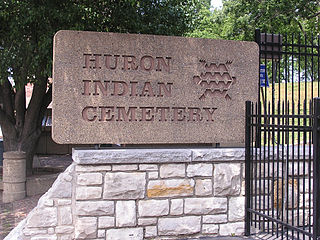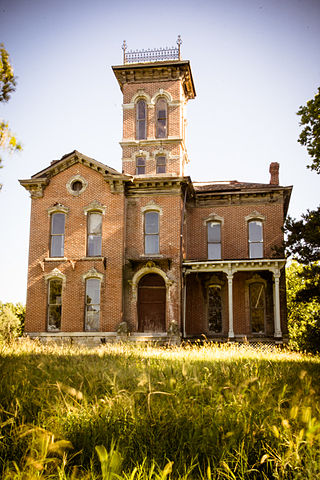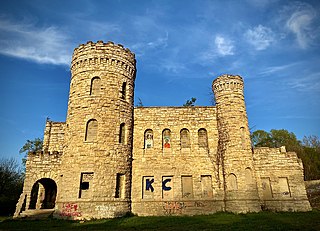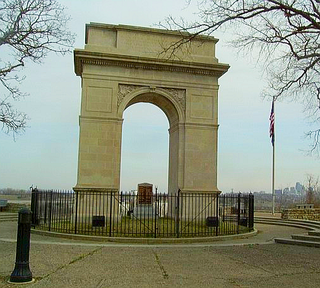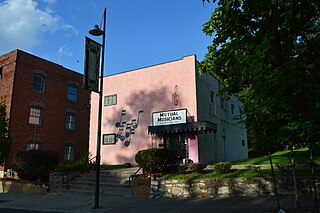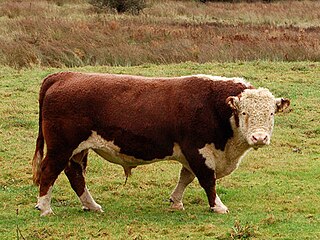9 Sights in Kansas City, United States (with Map and Images)
Legend
Welcome to your journey through the most beautiful sights in Kansas City, United States! Whether you want to discover the city's historical treasures or experience its modern highlights, you'll find everything your heart desires here. Be inspired by our selection and plan your unforgettable adventure in Kansas City. Dive into the diversity of this fascinating city and discover everything it has to offer.
Activities in Kansas City1. Kauffman Center for Performing Arts
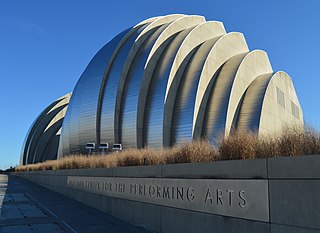
The Kauffman Center for the Performing Arts is in downtown Kansas City, Missouri, USA, at 16th and Broadway, near the city's Power & Light District, the T-Mobile Center and the Crossroads Arts District. Opened in 2011, it houses two venues: the 1,800-seat Muriel Kauffman Theatre, home of the Kansas City Ballet and Lyric Opera of Kansas City; and the 1,600-seat Helzberg Hall, home of the Kansas City Symphony Orchestra. Both venues host a variety of artists and performance groups in addition to these three resident entities.
2. Wyandotte National Burying Ground
The Huron Indian Cemetery in Kansas City, Kansas, also known as Huron Park Cemetery, is now formally known as the Wyandot National Burying Ground. It was established c. 1843, soon after the Wyandot had arrived following removal from Ohio. The tribe settled in the area for years, with many in 1855 accepting allotment of lands in Kansas in severalty. The majority of the Wyandot removed to Oklahoma in 1867, where they maintained tribal institutions and communal property. As a federally recognized tribe, they had legal control over the communal property of Huron Cemetery. For more than 100 years, the property has been controversial between the federally recognized Wyandotte Nation, based in Oklahoma, which wanted to sell it for redevelopment, and the much smaller, unrecognized Wyandot Nation of Kansas, which wanted to preserve the burying ground.
3. Sauer Castle
The Sauer Castle is an Italianate architecture home at 935 Shawnee Road in Kansas City, Kansas, built from 1871 to 1873. It was designed by famed architect Asa Beebe Cross as the residence of Anton Sauer. He had married Francesca in Vienna, Austria at age eighteen and a half. There, they had their five children: Gustave O.L., Anthony Philip Jr., Julius J., Emil, and Johanna. The house is listed on the National Register of Historic Places.
4. Kansas City Workhouse
City workhouse castle is a city historical register site located at 2001 Vine Street in Kansas City, Missouri. The castle was constructed by contractors in 1897 for US$25,700 next to the natural deposit of yellow limestone which had been quarried by inmates of the preceding city workhouse jail across Vine Street. On December 20, 1897, the castle was inaugurated as the city's new workhouse with dedicated jail. Its Romanesque Revival architecture with castellated towers were in vogue among the Kansas City upper class at the time. Its first Superintendent, Major Alfred Brant, proudly declared it "the best building Kansas City has".
5. Rosedale World War 1 Memorial Arch
The Rosedale Arch is a monument dedicated in 1924 to the World War I veterans of Rosedale, a neighborhood district and former municipality on the southern edge of Kansas City, Kansas. The arch was designed by Rosedale resident John LeRoy Marshall, inspired by the Arc de Triomphe. The flood-lighted structure is located on Mount Marty, and is most easily visible at night from the intersection of Rainbow Boulevard and Southwest Boulevard. A historic marker was dedicated under the arch in 1993 to honor the soldiers of World War II, the Korean War, and the Vietnam War.
6. Richards-Gebaur Memorial Airport
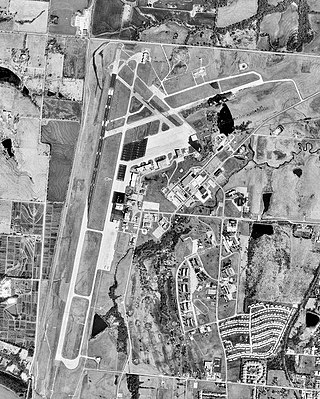
Richards-Gebaur Memorial Airport is a former airport that operated alongside Richards-Gebaur Air Reserve Station until the base's closure in 1994, and until it was closed in 1999. Formerly, it was operated as Grandview Airport from 1941 until it was leased by the United States Army in 1944. In April 1957, the base was renamed in honor of Kansas City, Missouri-born aviators John Francisco Richards II and Arthur William Gebaur Jr.
7. Mutual Musicians Foundation
The Mutual Musicians' Foundation Building is a historic building at 1823 Highland Avenue in Kansas City, Missouri. It is also known as the Mutual Musicians Association Building or the Musician's Union Local or the Local No. 627 of the American Federation of Musicians. It was a center of the development of the "Kansas City Style" of jazz, and was immortalized in the song "627 Stomp". Famous members of the Mutual Musicians Foundation included Count Basie, Bennie Moten, Jay McShann, George F. Lee, singer Julia Lee, trumpeter Hot Lips Page, tenor saxophonists Dick Wilson, Herschel Evans and Lester Young, alto saxophonist Charlie Parker, drummer Baby Lovett, and pianist Pete Johnson. The building was declared a National Historic Landmark in 1981. It continues to be used as an active performing venue, and also houses a museum.
8. The Hereford Bull
The Hereford is a British breed of beef cattle originally from Herefordshire in the West Midlands of England. It was the result of selective breeding from the mid-eighteenth century by a few families in Herefordshire, beginning some decades before the noted work of Robert Bakewell.
9. Liberty Memorial
The National World War I Museum and Memorial in Kansas City, Missouri was opened in 1926 as the Liberty Memorial. In 2004, it was designated by the United States Congress as the country's official war memorial and museum dedicated to World War I. A non-profit organization manages it in cooperation with the Kansas City Board of Parks and Recreation Commissioners. The museum focuses on global events from the causes of World War I before 1914 through the 1918 armistice and 1919 Paris Peace Conference. Visitors enter the exhibit space within the 32,000-square-foot (3,000 m2) facility across a glass bridge above a field of 9,000 red poppies, each representing 1,000 combatant deaths.
Share
How likely are you to recommend us?
Disclaimer Please be aware of your surroundings and do not enter private property. We are not liable for any damages that occur during the tours.
